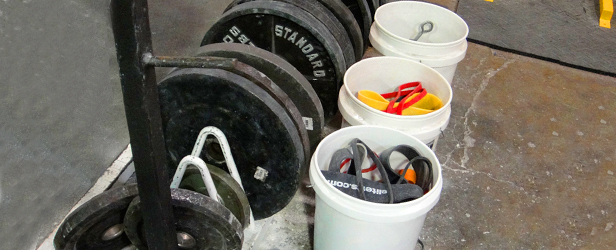
During the off-season, strength and conditioning coaches are tasked with the responsibility of developing and refining their athletes' gross motor qualities as well as building their physiological capacity to perform work. It is vital that strength, power, and anaerobic and aerobic capacities are well maintained as the athlete transitions into the competitive period and playing season. Decrements in maximal strength, power output, and conditioning will adversely affect performance on the field or court as well as increase the likelihood for injuries, both chronic and acute.
Strength training: A means to an end
Strength and conditioning coaches face a litany of challenges when writing and implementing programs for their athletes. Younger athletes, particularly school-aged athletes, are laden with a slew of obligations—familial, scholastic, athletic, and, in some instances, occupational demands. Many younger athletes participate in a number of sports and recreational activities making it difficult for them to adhere to a rigid strength and conditioning program. Older athletes, including collegiate and professional athletes, usually encompass an injury history that accompanies their longer training and competitive histories. When dealing with athletes, some strength coaches, especially those hailing from backgrounds as competitive lifters, fall in the maligned trap of immersing themselves with numbers and improvement solely dictated by adding pounds to the bar, often at the expense of movement quality and proper recovery. Coaches should be reminded that strength training is a means to an end for athletes, not an end itself.
Hold them accountable, but don’t hold them to exceptional standards
Don’t hold your athletes to exceptional standards. If they're football players, don’t expect them to produce elite classification worthy numbers on the squat, bench, and deadlift. Similarly, don’t hold their sprint times to that of world class sprinters. A few years ago, an article featuring Adrian Peterson’s workout roused lifters when it listed some of his numbers in the weight room. Many seasoned lifters scoffed at his 315-pound squat work sets. However, many of those lifters don’t have the wear and tear of hard-earned yardage on their bodies like him. However, if an athlete with Adrian Peterson’s ability had decided to exclusively concentrate on lifting instead of football, he’d undoubtedly own a number of records. Numbers need to be put in perspective. Instead, hold your athletes accountable in terms of consistency, attitude, and on-field performance. Stop drawing comparisons between your athletes and elite lifters.
Monitor stress as much as your monitor progress
Stressors aren’t just numerical. They extend beyond the minutes played, the statistics compiled, and the sets and reps performed in the gym. Stressors are also physiological, psychological, and emotional, all of which impact the athlete’s performance and well-being. I use a number of measures weekly to gauge the impact of preparation and training-related stress such as heart rate variability, resting heart rate upon awakening (to measure autonomic nervous system functioning), and vertical jump testing (to measure power output). I've found that these markers reveal the most regarding training status and recoverability.
I suspect that an athlete may be overreaching if his resting heart rate is up to five beats faster than usual. Also, overreaching may be characterized by an elevated heart rate variability due to continuing parasympathetic response. Injury aside, an athlete may also be overreaching if his vertical jump measurement slips below 10 percent of his best mark. In each of these scenarios, a deload is typically warranted. While I can't approach their coaches and tell them to cut practices short, I can still do my part to mitigate training-related stressors.
Typically, I’ll reduce the volume and intensity of the workouts for a week and advise my athletes to incorporate more recovery modalities and relaxation techniques. Self-myofascial release, stretching, and proper hydration will help restore proper tone, initiating a shift from sympathetic dominance to a more relaxed parasympathetic state. Relaxation techniques include avoiding late night training, large meals before bed, and pre-bedtime electronic usage and avoiding emotion evoking stimuli (e.g. arguments), cramming for tests, and listening to loud music before bed.
In addition to reviewing markers of overreaching, I’ll talk to them about what is occurring in their everyday lives. Many coaches overlook the importance of getting to know your athletes and instead take a strictly scientific approach when it comes to training and recovery. Sometimes, I’ll reach out to teammates and coaches or the athletic trainers I work alongside to gain further insight on the athlete's physical, psychological, and emotional state.
Utilizing the aforementioned tips will help you and your athletes better navigate the training process, a process that must be designed and carried out to confer continual improvements in athletic performance while preventing injury and burnout.










